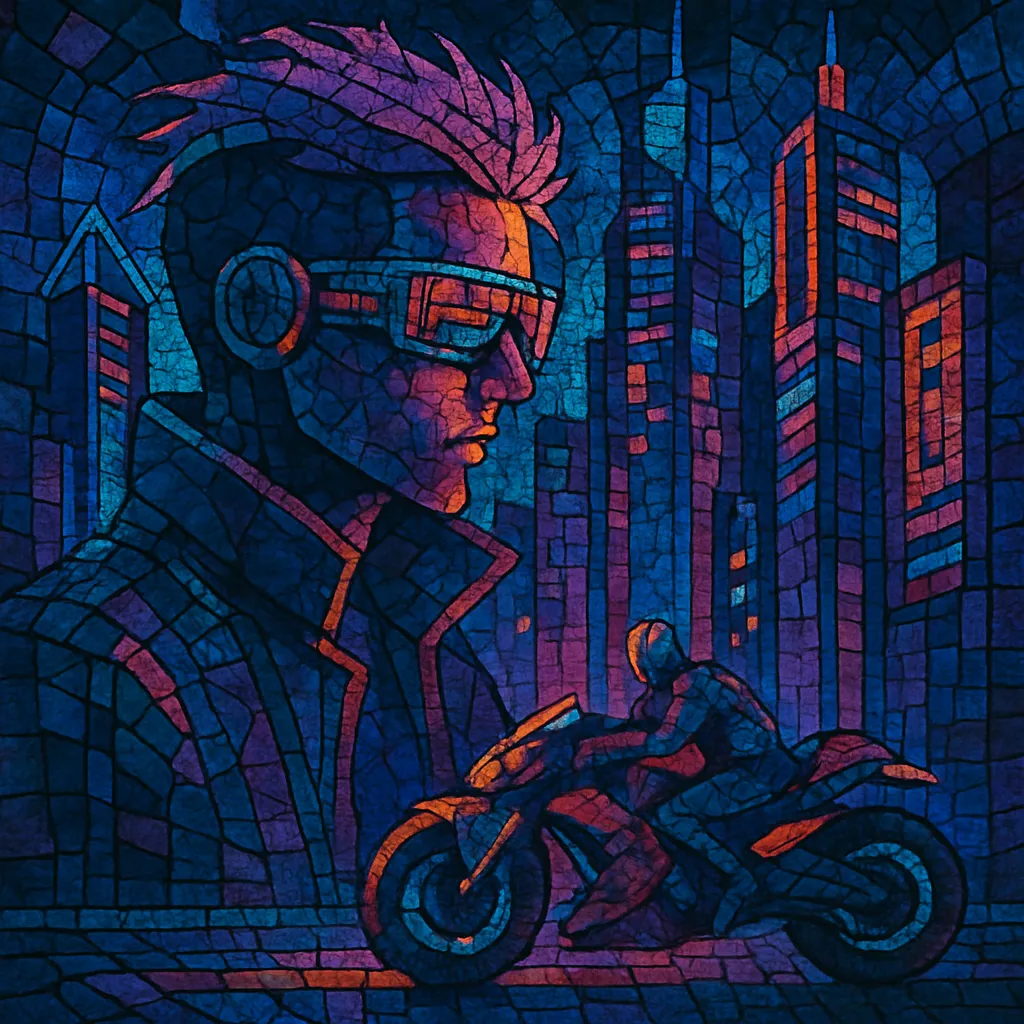Cyberpunk (as a music genre) fuses the hard-edged mechanics of industrial and EBM with the neon-lit futurism of synth-pop and new wave, aiming to sonify dystopia, high technology, and urban decay.
Its sound palette favors metallic percussion, distorted and sequenced basslines, cold digital pads, cybernetic vocal processing (vocoder, formants, bitcrush), and cinematic atmospheres evocative of rain-soaked megacities. Rhythms range from stomping four-on-the-floor to syncopated electro breaks; harmony typically leans minor (Aeolian/Phrygian), pedal drones, and tense intervals.
Aesthetically, it draws on science‑fiction themes—corporatocracy, hackers, surveillance, and transhumanism—blending club-ready intensity with widescreen, filmic sound design.
Cyberpunk music cohered alongside cyberpunk literature and cinema in the 1980s. Industrial (Throbbing Gristle, early Ministry), EBM (Front 242), and synth-pop/new wave provided the core grammar—sequenced basslines, drum machines, synthetic textures, and dystopian themes. Film and anime soundtracks (notably the synth-forward, atmospheric scoring that followed works like Blade Runner) legitimized a noir‑futurist sonic aesthetic.
In the 1990s, electro‑industrial and industrial rock brought cyberpunk’s themes to heavier club and rock stages. Acts such as Front Line Assembly, Skinny Puppy, and Nine Inch Nails popularized a gritty, high-tech sound laced with sampling, glitch, and cybernetic vocals. Parallel developments in techno and breakbeat fed the genre’s rhythmic vocabulary, while video games and OVA/anime expanded its cultural footprint.
Wider internet culture, VJing, and DAW democratisation encouraged cyberpunk’s cross‑pollination with breakbeat, drum & bass, and electro. The aesthetic moved fluidly between clubs, multimedia art, and OSTs, emphasizing themes of networks, surveillance, and posthuman identity.
The synthwave boom revived interest in neon‑noir futurism; its darker branch, darksynth, leaned explicitly cyberpunk in mood and narrative. Artists like Perturbator and Carpenter Brut emphasized distorted bass arps, cinematic pads, and relentless propulsion, while acts such as Celldweller and Scandroid fused rock and EDM with cybernetic storytelling.
Major game and streaming franchises brought cyberpunk’s sound and imagery to mass audiences, reinforcing the genre’s blend of industrial weight, electronic precision, and cinematic scope. Producers and bands across techno, rock, and experimental scenes routinely adopt cyberpunk motifs in sound design, themes, and visuals.


